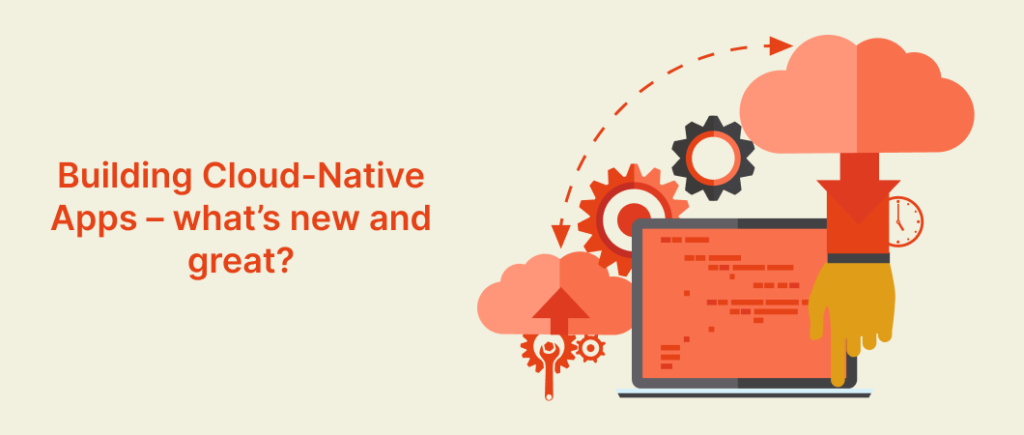Last updated on April 11th, 2024
Today’s fast-paced, software-driven markets and the soaring ‘anytime, anywhere’ culture demand a restructuring of many tried and trusted approaches. Among the areas impacted is the manner we design, build, and use applications.
Cloud-native applications have risen as a response to this need. They provide businesses with immense responsiveness and agility to respond to market demands. These applications, for example, are incredibly easy to optimize and evolve. Businesses can easily incorporate user feedback for continuous improvement, build new applications, or connect the entire application ecosystem to deliver compelling experiences.
Given the benefits of cloud-native applications, global adoption continues to rise. These applications deliver a consistent development and automated management experience across private, public, or hybrid clouds. The approach provides organizations the capacity to think beyond the on-premises boundaries, achieve enterprise mobility and ensure continuous availability, scalability, accessibility, and connectivity.
These applications are designed for a cloud-first environment, and hence inherently leverage the scale, elasticity, resiliency, and flexibility the cloud provides.
But it’s also true that they need special development considerations.
Top 6 Trends in Cloud-Native Application Development
Cloud-native application development continues to evolve as developers seek ways to better utilize cloud resources. Some of the key trends to watch out for are:
Serverless Computing
The focus on serverless remains fixed on its northward trajectory. These technologies go hand in glove to simplify the application lifecycle in a cloud-native environment.
On-demand availability of resources, immense flexibility, high scalability, greater cost-effectiveness, and lower deployment times are making serverless computing such as AWS Lambda score over traditional cloud-based infrastructure.
Containerization and Kubernetes
The use of Containers is also on an upward incline for cloud-native application development. Container technology accelerates application development and deployment, makes workloads portable and more mobile between different servers and clouds, and makes application scaling faster and simpler.
Kubernetes or K8s is rising as a developer favorite as the technology allows them to deploy, scale, and manage cloud-native applications without hassles. Kubernetes and container technology ensure that cloud-native applications run with utmost efficiency. They also make it easier to roll out configuration changes, balance workloads, automate functions, and support enterprises when they need to scale their applications as needed and without adding up to the DevOps teams.
Edge Computing
Edge computing in cloud-native application development is another trend to look out for. Edge computing enhances the future of cloud-computing, it has the capabilities to unlock opportunities and adds enhanced mobility to the cloud by extending the boundaries of the enterprise technology ecosystem. Aligning cloud-native principles to edge computing brings the cloud, and the cloud-native applications close to the data center or the activity area. This provides an interoperable platform for DevOps teams to develop and deploy their applications remotely, innovate at scale, and add unprecedented velocity and speed to the entire process.
Low-code and No-code
Reports forecast the rise of low-code and no-code adoption as we pivot towards a digital world. The use of low-code and no-code is set to increase in cloud-native application development to accelerate the speed of innovation and improve development velocity. Gartner estimates that the market demand for app development services will grow at least 5 times faster than IT‘s capacity to deliver them. As such, looking towards no-code or low-code cloud-native application development becomes an organic transition. The central plank of this adoption is the potential for business users to build simple applications, custom frontends, and basic integrations without having to depend on constrained IT resources.
Low and no-code application development enables enterprises to embed non-technical teams into the app development lifecycle. They are set to transform application development and help businesses increase their responsiveness to market demands and drive continuous improvement of their cloud-native applications.
Open Source
The rise of open source in the enterprise application development narrative is only increasing as the app development community takes a stronger stand this year against factors that suppress innovation, such as vendor lock-ins, participation restrictions, and other closed approaches.
The community is actively coming up with new tools, approaches, and best practices to solve business use cases in a cloud-native world. While it is hard to ignore the constant change in the open-source world, these changes are influencers of the shifts needed to help DevOps teams mitigate the complexities associated with the use of open-source tools for cloud-native application development and deployment.
DevSecOps
The use of open-source, low-code, and no-code, container technologies and even microservices can open up cloud-native applications to security vulnerabilities. Since these technologies are becoming crucial to the development toolkit and there is a growing concern around the rising sophistication of security breaches, and attacks, taking a close look at the security posture becomes essential in cloud-native application development.
While zero-trust principles, strong access management policies, etc., become integral to the mix, baking security into the cloud-native application becomes critical. The pursuant rise of DevSecOps, a methodology that merges the security aspects with DevOps practices, allows developers to follow a preventive approach and fix misconfigurations faster.
DevSecOps promotes faster and safer development and deployment. It enables developers to bridge the gap between code and security in the cloud, allows them to automate tests in the cloud, and enables them to build cloud-native applications in a serverless environment confidently.
Conclusion
We are now transitioning into a cloud-native future as business agility, scalability flexibility, and the capacity to drive elevated customer experiences become influencers of business success. Cloud-native application development, as such, will continue to evolve at a fast pace to help businesses leverage the power of digital technologies at scale while improving security, agility, and development velocity.
Connect with us to know how to embrace the full power of cloud-native application development in the most appropriate manner.



